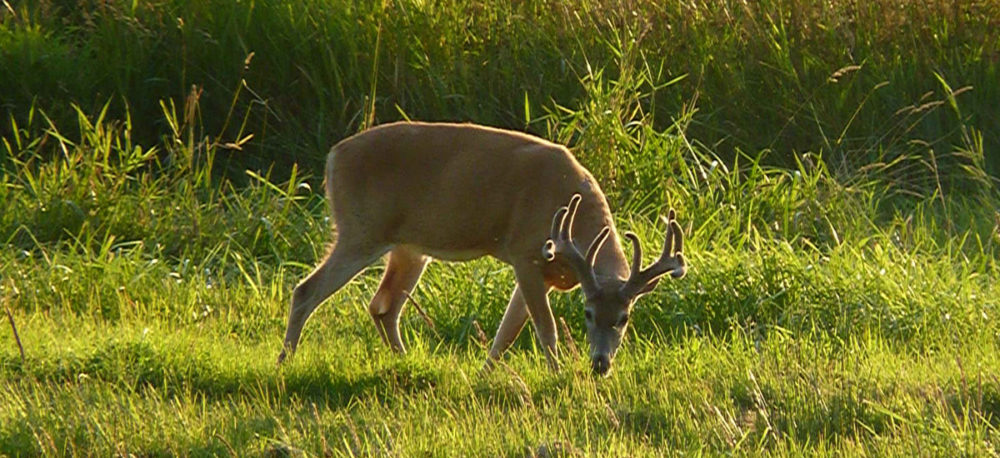Today, the U.S. Fish and Wildlife Service (FWS) released an update to its peer review policy for endangered species listings. The new policy takes a step forward in terms of safeguarding the science that informs endangered species listing decisions. While the provisions could be stronger in a few areas, the new policy takes strong steps toward more robust and transparent peer-review at the agency, following efforts by a group of independent scientists working with the Union of Concerned Scientists and others to improve science-based decisions around endangered species.
Scientists ask FWS for independent science in endangered species decisions
In May, independent scientists, working with the UCS and Project Coyote, released a letter asking the Department of the Interior (DOI) and the Department of Commerce (DOC) to follow a process for obtaining independent scientific advice on listing and delisting decisions under the Endangered Species Act (ESA). Since the ESA mandates that species warrant protection based solely on scientific assessments, it is crucial that the agency be informed by robust independent science. Led by UCS Science Network member and associate professor at the University of Wisconsin-Madison Adrian Treves, the scientists’ letter outlined how the ESA mandate for best available science could be respected by relying on external, independent scientific input, without interference from non-scientists.
Specifically, the scientists asked the DOI and DOC to entrust the scientific evaluation of species listing and de-listing determinations to an external committee of scientists who are best suited to assess the scientific evidence and make a public recommendation to the agency, based solely on the scientific and commercial data available, as the ESA requires.
A revised FWS peer review policy
While the new policy doesn’t go as far as actualizing the independence science vision in the scientists’ letter, it does take steps to address some of the concerns they laid out, and the FWS greatly improved the clarity of its guidance on peer review. Here are some strong features of the new policy.
- Developing a clear and consistent process. First, it is important to celebrate the importance of the FWS having an agency-wide policy it intends to implement consistently. A criticism of endangered species listing decisions in recent years has been the inconsistent handling of peer-review on species listing and delisting decisions, on everything from wolves to wolverines. Compared to the 1994 policy previously in place, the new policy provides much greater detail on when and how the agency will employ peer review. It identifies what types of decisions will require peer review and clarifies what the agency will ask peer reviewers to assess in their review.
- Separating science and policy. The agency now plans to use Species Status Assessments as the scientific foundation for listing decisions. Doing so is an excellent opportunity for the agency to make clearer distinction between science and policy—a best practice for agencies to help ensure that science can inform decisions without political interference. The more agencies can put steps in the process to separate scientific assessments from the policy decision, the better they can ensure that politics doesn’t interfere in the development of the scientific assessment. In turn, this allows the public to see the science that informed the policy decision and hold agencies accountable when science-based decisions don’t appear to be, well, science-based. I’m glad to see the FWS making this move and hope they will continue to implement this.
- Tackling conflict of interest. The new policy provides some much-needed detail on handling of conflict of interest. This is a huge improvement over the previous policy that didn’t address conflict of interest at all. Now the FWS will have a policy in place for peer reviewers to publicly report potential conflicts—and language on how the agency will handle such situations when they arise.
- Considering controversial decisions. The new policy also provides more clarity around agency procedures when decisions are controversial. The agency will now plan to contract out the peer-review process for controversial listing decisions. The policy also allows for peer reviewers to request that the FWS not attribute reviewers’ specific comments, when participating in a review on a controversial decision. This is an important provision as greater anonymity for reviewers is an important part of an honest and robust review process since it allows reviewers the freedom to make honest and constructive scientific reviews with less concern about managing relationships or navigating politics.
- Increasing transparency. Importantly, more of this new process will now be more visible to the public under the new policy. The FWS intends to make publicly available the peer review documents themselves as well as conflict-of-interest forms on regulations.gov, and the peer review plan will be posted on the agency’s Science Excellence webpage. If implemented in a consistent and timely manner, this added transparency will be a great step for public access to FWS science and for the ability of the public to hold the agency accountable on making science-based endangered species decisions.
Room for improvement
While the new policy is a big improvement over the preexisting policy, there are a few areas that the policy could be enhanced with more clarity. For example, the policy doesn’t provide many details on when a new peer-review process will be necessary versus not. The policy states that the agency will conduct peer review at the proposed stage of a rulemaking unless a “thorough and rigorous peer review was done” for the species status assessment. Further, they say “if there is no new substantive information,” then additional peer review of a proposed draft recovery plan could be determined unnecessary. However, the policy does not clearly define what new substantive information means, and this vagueness could allow the agency to abstain from conducting further peer reviews during a listing process, or during critical habitat designations, etc., in the future.
Controversial decisions, as you might imagine, are where the temptation to politicize the science is highest. Yet the policy does not address how the agency will determine if a decision is controversial and thus in need of a contractor to administer the peer review. Further, when a contractor is used to administer a peer review process for a controversial listing decision, the policy fails to address any potential conflicts of interest associated with the contracting company. Such conflicts, if not known or not disclosed, could lead to undue political influence on a scientific assessment. For example, if the listing of a species stands to affect a particular industry that also contracts with the company chosen to conduct the peer review, the contractors may be incentivized not to list the species.
Such scenarios aren’t just hypothetical. The nonprofit Toxicology Excellence for Risk Assessment (TERA), for example, has managed hundreds of peer reviews for toxicological assessments of chemicals, but more than half of the peer reviews it has conducted have been for the chemical industry. The firm has been criticized for relying on a small circle of experts with industry ties as reviewers and coming to consistently pro-industry conclusions. When thinking about conflict of interest in science, it is important to consider financial ties not only of the authors but also of peer reviewers and those administering the peer review process.
Safeguarding the science
I’m pleased to see the FWS enact this improved policy. It provides some additional clarity on how the agency will use peer review of scientific assessments, and importantly, it aims to better safeguard the process by which science informs the agency. I look forward to watching the agency put this policy into practice fairly and consistently as it carries out the Endangered Species Act.

